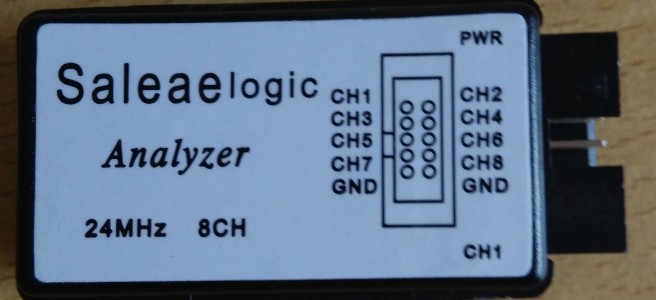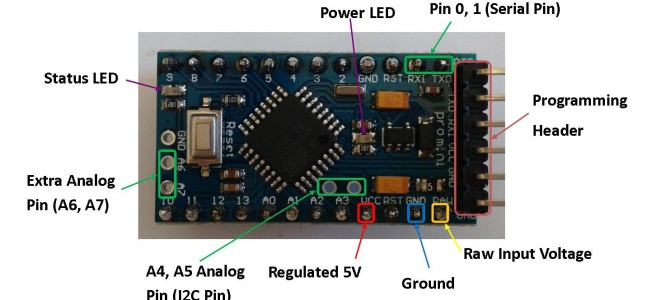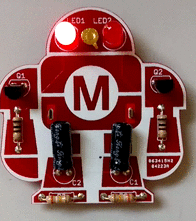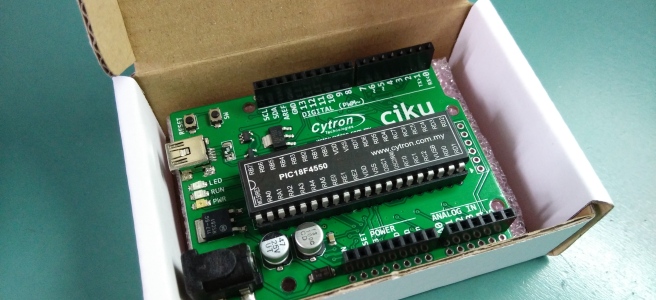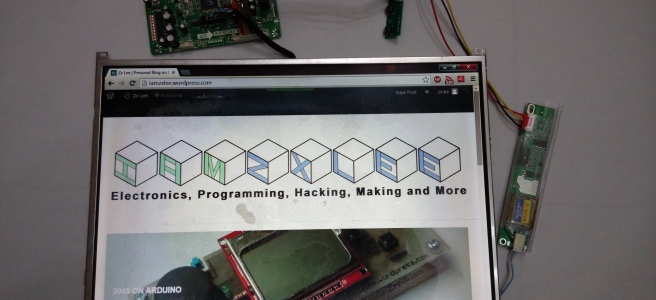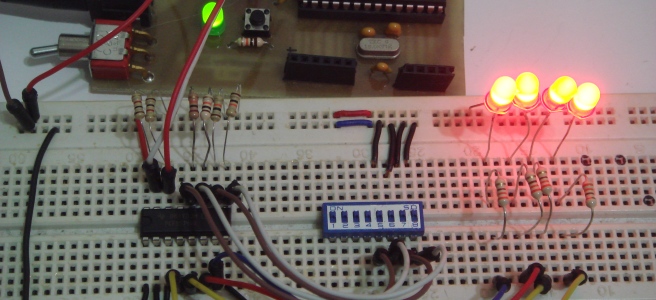A few years ago, I wrote an article on homemade PCB which is useful to quickly prototype a PCB and produce them at low cost. However, things can get a bit more challenging once you need to produce a bigger dimension PCB or in high quantity or even making it double sided. It is not a mission impossible, but it requires extra effort. Recently, I wanted to play with a RGB LED matrix, which requires some kind of driver to light it up. To prototype it, I can do them on breadboard, but that will be troublesome with all the jumpers going around. So, I decided that this is also a good opportunity for me to try something different, which is to design and manufacture a PCB for the RGB LED Matrix driver. Continue reading “Manufactured my first PCB”
Display Arduino Analog Input using LabVIEW
In my previous article, I have made the Bridge Monitoring System using Wireless Sensor Network project, which allows me to display all the related measurements from Arduino on my PC. Therefore, in this article, I am going to explain in details on how to display the Arduino measurements using Laboratory Virtual Instrument Engineering Workbench (LabVIEW). Two analog inputs of Arduino will be measured and displayed on a graph in LabVIEW. Continue reading “Display Arduino Analog Input using LabVIEW”
Available on Github
Yes, you heard it right, for any future post with project files and software, I will upload them into my Github whenever it is possible. For those who have never heard of Github before, it is a version control repository that can be used to share and collaborate software. There are a lot of open source software including many of those Arduino libraries are using Github as a platform to share for the use of the community. Continue reading “Available on Github”
Bridge Monitoring System using Wireless Sensor Network
It’s been a long time since I last work on any hobby project and update on my blog. Recently, I completed a mini project together with two of my friends. So I am going to take this opportunity to share the project that we have made, we named it the Bridge Monitoring System (BMS) using Wireless Sensor Network (WSN). We are required to design an embedded system that is related with disaster management, either mitigation, preparedness, response or rehabilitation. To give you a high level overview of this project, basically we created three sensor nodes that acquire sensor measurement and transmit to central hub through wireless network. The sensor network works in a many-to-one fashion and data processing is done on the central hub. All the sensor measurement from each node is also displayed on the Host PC for user interface. Therefore, in this article, I am going to walk through some details of the project and how it works. Continue reading “Bridge Monitoring System using Wireless Sensor Network”
USB Logic Analyzer Review
Not too long ago, I bought myself a USB Logic Analyzer from eBay at the cost of $9.50. This logic analyzer comes with 8 channels of digital input and able to support the sampling rate up to 24MHz. Why do you need a logic analyzer? This is very useful in debugging your programs whether they are sending/receiving the correct data or determining the timing of signals. If you are looking for this item in eBay, the item name is USB Logic Analyzer Device Set USB Cable 24MHz 8CH 24MHz for ARM FPGA. Before purchasing this low cost logic analyzer, I did some search from Google and found out that the logic analyzer is actually a clone of the Saleae logic analyzer.
Arduino Pro Mini 328 Review
Recently I have received two Pro Mini 328 which I have ordered one month ago from Ebay. I bought them from gc_supermarket seller. Although Pro Mini was not something new from Arduino but it was my first time to use an Arduino Pro Mini so I am going to give my review on it. It might be useful for you in selecting which Arduino to use in your future projects. Summary of consideration in buying Pro Mini is available at the end of this article. Continue reading “Arduino Pro Mini 328 Review”
Visit to Penang International Science Fair and Mini Maker Faire
This would probably be a late update of my visit to Penang International Science Fair and the first ever Penang Mini Maker Faire which happened last month, 15 and 16 of November. Both of these events are held at Subterranean Penang International Convention and Exhibition Centre (SPICE), formally known as PISA.

Continue reading “Visit to Penang International Science Fair and Mini Maker Faire”
CIKU, PIC18F4550 based Arduino Form Controller
Recently I have participated in CIKU contest held by Cytron Technologies. The requirement to participate in this contest is to share a photo/video on your project using the PIC development board, SK40C. Get more than 50 likes and win yourself a CIKU. So what is a CIKU? CIKU is a PIC18F4550 based Arduino Form Controller, a product by Cytron Technologies. For more info about CIKU, check out its official product page. I would also like to mention that CIKU is a product of Malaysia. Oh, by the way, CIKU is named after a tropical fruit, Sapodilla, which is called ciku in Malay. In this article, I am going to give an overview on CIKU together with its feature before hands on with it. Continue reading “CIKU, PIC18F4550 based Arduino Form Controller”
From an old laptop, into a new monitor
In this article, I am going to show you how to revive a dead laptop’s monitor into an external monitor. I had an old laptop which is Toshiba Satellite L100 model that is no longer in used. So, an idea came to my mind, why not reuse the laptop LCD as a second monitor for the laptop I am using currently. In my opinion, a self made monitor is way cooler than buying a new one, so I decided to give it a shot.
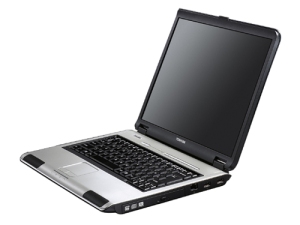
PCF8574A 8 bit I/O Expander
In this tutorial, I am going to show a I/O expander method using PCF8574A, which is a 8 bit I/O expander using I2C bus. This is another alternative other than using shift registers to expand either inputs or outputs such as 74HC595 (outputs) or 74HC165 (inputs). One of the advantages of using PCF8574A I/O expander is that it uses I2C bus, which requires only two data lines, they are clock (SCK) and data (SDA). Therefore, with these two lines, you can control up to eight of the same chip by changing the address input, providing extra 64 I/O pins.




